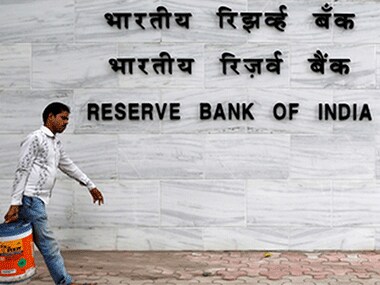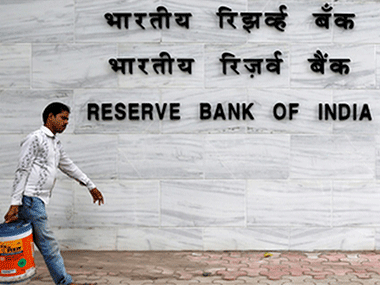Indications are that cash withdrawal curbs imposed after the demonetisation announcement will not end fully by 30 December, 2016 the deadline promised by Prime Minister Narendra Modi to end the pain of the common man. According to two senior bankers, cash curbs will continue beyond 30 December though some withdrawal relaxations are likely to be announced for businesses. Also, the Reserve Bank of India (RBI) might ease some restrictions on ATM withdrawals, but curbs on high value cash withdrawals are likely to stay for a longer-than-expected period. [caption id=“attachment_3168420” align=“alignleft” width=“380”]  Reuters[/caption] “It will take some more time and only gradually,” said one of the bankers quoted earlier. But it is clear that the government will ease some restrictions, to save its face in the backdrop of the promise made by PM Modi to the common man. In his last Mann Ki Baat telecast of 2016 on Sunday, Prime Minister Narendra Modi aggressively defended demonetisation. His line of attack on his critics was that it is the corrupt and black money hoarders who are finding fault with his government’s 8 November surprise move. Also, Modi justified the frequent changes in note ban rules saying it was being done only because the government is sensitive to the problems of the people. Since note ban, the Modi government’s stance has been that demonetisation is for short-term pain and long-term gain. But, none of these excuses would suffice to justify the gross inconvenience caused to people from all walks of life owing to the cash crunch that isn’t over even now. Even after a month and a half, people are allowed withdrawals of only Rs 24,000 per week from their banks and Rs 2,500 per ATM. India isn’t facing an economic emergency to face such prolonged restrictions on normal banking transactions. Even by the current limits, banks are unable to honor it simply because there is not enough cash in the banking system despite the repeated assurances from the Reserve Bank of India and finance ministry. Hence, Modi’s reasoning that only the corrupt and fraud oppose demonetisation isn’t fair. Only five days are left for Modi’s 50-day deadline to come to an end. That’s the time he sought to end the ‘temporary’ pain of the people on account of demonetisation-induced artificial cash crunch. But, it is likely that the PM will fail to make good of his promise in its entirety. The reasons for this aren’t difficult to understand. Until 19 December, the RBI has infused only Rs 5.92 lakh crore into the banking system as compared with deposits worth Rs 12.44 lakh crore in old Rs 500, Rs 1,000 currencies. Of the total 22.6 billion pieces of notes of various denominations infused, about 20.4 billion pieces belonged to smaller denominations of Rs 10, Rs 20, Rs 50 and Rs 100, while only 2.2 billion belonged to higher denominations of Rs 2,000 and Rs 500. It is not clear how many of the 2.2 billion is Rs 2,000 notes and how many are Rs 500 notes. Here is where the problem lies. The ongoing cash crunch, according to bankers, is mainly due to shortage of new Rs 500 notes. The government pulled out 86 percent of total currency in circulation on 8 November. According to an RTI response, the RBI had only 4.95 lakh crore in the new Rs 2,000 notes on 8 November and not even a single Rs 500 note on that day. The printing of Rs 500 notes only began later. That means, the government and RBI started on Day One with less than a fourth of stock of new currency, that too Rs 2,000 bills, which caused a cash crunch. So far, neither the government nor the RBI has given any clarity on the breakup of Rs 2,000 and Rs 500 notes infused since demonetisation. Chances are that Rs 500 notes issued are only a small fraction. PM Modi’s justifications for demonetisation or finance minister Arun Jaitley’s clarifications cannot wish away the fact that the Modi government started blind on a massive gamble in public life and economy. It was totally unprepared and decided matters on the go. That explains the endless number of rules, sharp U-turns and the 60 circulars from the Reserve Bank in just a month. The government had an excuse of secrecy for making an abrupt start but that excuse no longer holds after a month and a half. The entire exercise lacks transparency even at this stage. According to reports (read here), the RBI has refused to make public the details of the board meeting that discussed demonetisation saying “it would lead to disproportionate diversion of resources of the organization.” It has thus refused to disclose its recommendations to the government to scrap Rs 500 and Rs 1,000 banknotes. This response isn’t satisfactory since there has been tremendous pain in the lives of the common men during the exercise and the very role of RBI in demonetisation has been questioned by many. On Friday, the Hindustan Times reported that the decision to scrap high-value notes was cleared by the bank’s board hours before Prime Minister Narendra Modi announced the decision on national television on 8 November. Given that the excuse of secrecy isn’t valid any longer, the common man deserves to know a) how the demonetisation plan emerged in the first place, b) who were part of the decision-making, c) how many new currency of Rs 500 has been printed so far, d) how long will the cash crunch last, and e) what is the actual quantifiable cost to the economy on account of demonetisation (economic loss, cost of roll out and estimated job losses). If people have begun hoarding legitimate cash withdrawn from branches and ATMs post demonetisation, that’s because the trust of public with the banking system is shaken and there is considerable uncertainty on the road ahead. The Modi government still draws considerable support from a good number of the 125 crore Indians on the demonetisation gamble, the pains of which is likely to last beyond the short-term and the likely gains (on black money, wider direct tax base and checking fake currency and terror) will only be visible in the long-term. It is only just that both the government and the RBI take the common man fully into confidence and be transparent about the whole affair.
It is only a just act that both the government and RBI take the common man fully into confidence and be transparent on the whole affair
Advertisement
End of Article


)
)
)
)
)
)
)
)
)



